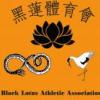-
Posts
8,372 -
Joined
-
Last visited
-
Days Won
20

John A Stuart replied to Krystian's topic in Tosogu

John A Stuart replied to Oliver J's topic in Translation Assistance

John A Stuart replied to Oliver J's topic in Translation Assistance

John A Stuart replied to TheGermanBastard's topic in Translation Assistance

John A Stuart replied to Loyer's topic in Translation Assistance

